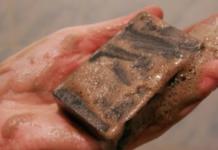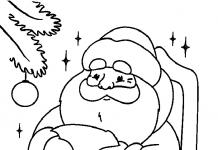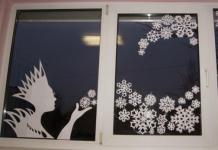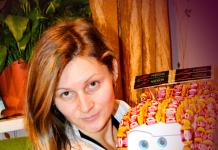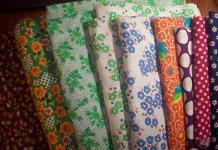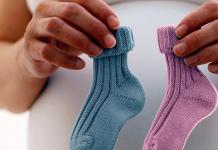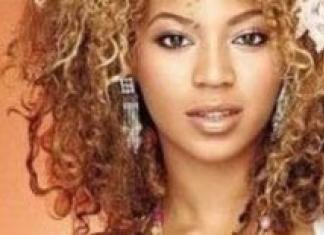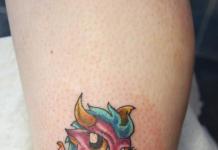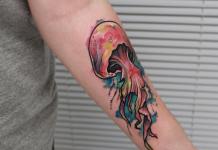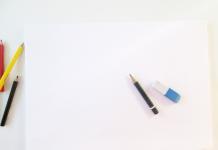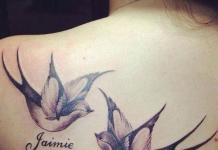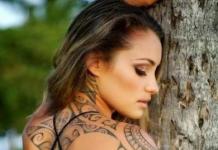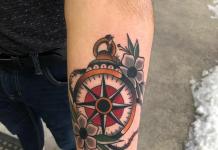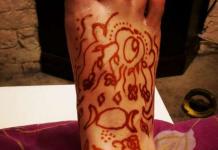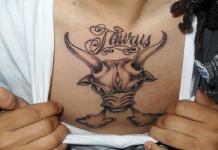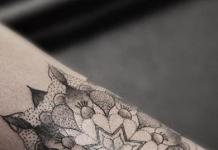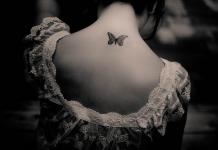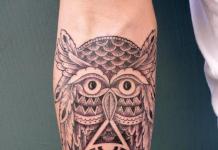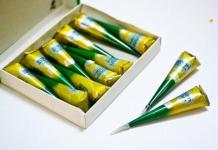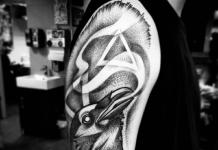Tattoo Needle Verge Round Liner

Tattoo tips Verge Round 5R
The lion's share of success when applying a tattoo depends on the correct choice of needle. However, not every master is able to cope with this task, especially without an impressive baggage of practical experience. The problem lies in the variety of equipment designed to implement the art of tattooing. Various models of tattoo machines, the lack of a single standard for calibrating needles, and many manufacturers make even professional tattoo artists think. This article will help anyone who is faced with the problem of choosing needles and will make the job easier and more efficient.
Tips for tattoo needles
The tip can be called the main part of the needle, since it is he who is responsible for its reliable fastening and hitting the target. Manufacturers produce a huge number of varieties of tips, but they are always based on the degree of sharpening. In total, there are three options for cone-shaped sharpening:
- Short. The shorter the cone, the more paint will flow down the needle and get under the skin. Such models are indispensable for the full painting of the picture;
- Average. The most versatile option, but it is better to use it with the acquisition of certain experience;
- Long. Long taper tips are used in liners for contouring. The longer the tip, the less paint will flow onto the needle, which means the line will turn out to be thinner and more accurate. In addition, this type of tip is chosen when working with black pigment, as it leaves the master more time to work on the drawing.
Large-diameter needles with a short tip leave fat dots of pigment on the body. While the small diameter and long tip allow you to create small specks.
However, according to some professional craftsmen, there is no big difference in the size of the cone, and if you have certain skills, you can work equally effectively with any tips. The choice is determined only by personal preferences. The main thing is to buy needles for a tattoo machine with which work will become comfortable and familiar.
Thickness and number of needles
All needles differ in diameter (total width of the solder), shape and number of thin elements included in the solder. These are the main characteristics that are responsible for the level of damage to the skin and the amount of coloring pigment that enters the skin with each blow.
Needle sizes can vary from 0.2 mm (size 6) to 0.35 mm (size 12). The thinner the needle, the harder the line will be. And, conversely, for a complete and quick painting, it is better to use wide needles. The tenth size is considered optimal for painting - 0.3 mm.
Shape of tattoo needles
There are several types of adhesions, each designed to achieve a specific result. Conventionally, all needles can be divided into two main types: liners and shaders. The former are designed for clear lines and image detail. The latter are ideal for filling or blending pigment. It is on the basis of these models that numerous modifications are built.
Round Liner (RL)
The needle is a round soldering with the ends of thin elements brought together at the bottom. The number in the name of the needle indicates the number of elements soldered on one rod and it is this that affects the thickness of the line. The more needles in the spike, the thicker the contour strokes.
Most often, this type of needle is used when working with inscriptions or permanent make-up, which requires careful drawing of small-sized elements. Any tattoo machine is suitable for this type of needle: an induction liner or a rotor set for a hard blow.
Round Shader (RS)
Loose needles. This soldering is most often used for painting over a drawing. Ideal for creating round parts. Both an induction shader and a rotary tattoo machine adjusted for a soft blow will work equally effectively with it.
Magnum
They are most in demand when shading the pigment with uniform coloring of large areas of the skin. They are divided into types: M1 and M2. In the first spike, the ends of the needles are staggered and are used for soft shading and creating shadows. For them, an induction tattoo machine shader or a rotor with a soft blow is suitable. M2 is a two-row solder designed for deep and dense shading.
Round Magnum (RM)
The most gentle needles that cause minimal damage to the skin. Most often used for soft shading of the surface.
Flats (F; FS)
One of the professional favorites. Allows you to change colors, create halftones and smooth color transitions. Thin elements in the solder are placed tightly in one row.
Whatever type of work the master does: full shading, designing contour lines or creating shadows, you need to choose the right tools that will improve the quality of the drawing without unnecessary difficulties. Each drawing technique involves the use of certain adhesions. For example, textured needles are more suitable for painting over. Their disadvantage is severe damage to the skin, but the pattern is more saturated and clear. And, of course, such needles cannot be used when performing permanent makeup. For this type of work, it is necessary to purchase thin needles that leave as few wounds as possible. Most often, a needle for these purposes is made from precious or semi-precious alloys: platinum, alloy steel or nickel.
Sterilization of tattoo needles
The most common method of processing needles used in production is gas sterilization. Disinfected needles are packed in transparent blisters, equipped with an indicator. Its presence indicates the sterilization carried out, and the information on the back will tell you about the period during which the needles will remain sterile. However, even after this period, the needles can be used for re-sterilization in an autoclave.
Manufacturers
Any workshop that manufactures tattoo machines also works on the production of component tools. Therefore, it makes no sense to single out top manufacturers of needles.
When choosing spare parts and equipment, it is better to select models of the same brand as the tattoo machine itself. In addition, most manufacturers popular with craftsmen make up special kits, which, in addition to the machine, include all the necessary equipment, including a set of needles. This is an ideal choice for those who are just learning the art of underwear and do not yet have much work experience.
BASKET IS EMPTY
Types of needles for a tattoo machine and their soldering
The work of a tattoo artist directly depends on the quality of the needle. It is used to pierce the top layer of the skin to inject pigment through it. Tattoo needles have different sharpening and different diameters. There are three types of sharpening needles: long, medium and short. Their diameter ranges from 0.25 to 0.4 mm.
Needles with a long sharpening are suitable for contouring, with a medium - universal, with a short - for painting. Needles of maximum diameter and with a short sharpening leave a thick dot on the skin. Needles with a thin diameter and with a long sharpening, respectively, leave the smallest point in the skin. Needles with a diameter of 0.3 and 0.35 mm are in great demand.
According to the purpose, the needles are divided into several categories
Round Linear (RL)
Such needles are designed for drawing contour lines. Contour needles are soldered around. In soldering, the needles are tightly bundled at the end. The more needles in the bundle, the thicker the contour line. It is mainly used for drawing fine lines and small details. It is used by masters for permanent make-up, tattooing.

In our tattoo shop you can purchase the following types of RL needles:
- Cheyenne needles from the Cartucce Cheyenne Pro and The Cheyenne Hawk series;
Round Shader (RS)
Round thinned beam for shading, shadows and smooth color transitions. In this soldering, the needles are parallel to each other.


In our tattoo shop you can purchase the following RS needles:
- Cheyenne needles from the Cartucce Cheyenne Pro and The Cheyenne Hawk series;
Magnum
Coloring needles. They are divided into two subspecies - M1 (Weaved Mag) and M2 (Stacked Mag). They differ in the way the needles are soldered - and, as a result, in their application.
M1 needles at the base they are soldered in a row, but the sharpened parts diverge in a checkerboard pattern. Used for soft shading, from transparent to deep shading.


In our store you can buy Magnum M1 needles of the following options:
- Cheyenne needles from the Cartucce Cheyenne Pro and The Cheyenne Hawk series;
Soldering needle M2 differs in that the needles in the beam are arranged in parallel, in two rows, in a checkerboard pattern. Designed for deep painting.

In our store you can buy Magnum M2 needles of the following options:
- Cheyenne needles from the Cartucce Cheyenne Pro and The Cheyenne Hawk series.
Round Magnum (RM)
Due to the special crescent soldering, it does not leave "serifs" characteristic of ordinary Magnums and reduce skin injuries. Used for soft painting.


Needles are divided according to several criteria:
Sharpening (taper).
Diameter.
Needle soldering configuration.
Sharpening tattoo needles (taper).
 There are 3 types of needle sharpening.
There are 3 types of needle sharpening.
- L(Long)- long, sharp sharpening.
- M(Medium)- medium sharpening
- S(Short)-short sharpening, it is also called bullet-shaped.
To be precise, all these configurations are also divided by the length of the sharpening of the needles themselves.
- Standard (Short) Taper- 1.4mm-1.5mm
- Long Taper- 1.8mm-2.0mm
- Double Long Taper- 2.2mm
- Extra Long Taper- 2.5mm-2.8mm
Diameter of tattoo needles.
There are diameter tattoo needles from 0.25mm to 0.40mm. When you see this code on the package of needles 1207RL- then the first two digits of 12 indicate the diameter of the needles, the 4 most common needle diameters are #12 (0.35mm), #10 (0.30mm) #8 (0.25mm) #6 (0.20mm). #12 is the most common size, #10 is the most commonly used for liners.
Configuration for soldering tattoo needles.
Needles are most often soldered in a circle, row, or 2 rows. The number of soldered needles can vary from 2 to 30 or even more pieces.
- R (round)- needles soldered into a circle are called rounds.
In turn, R rounds are divided into contour L(linear) and shading S (shader):
- RL (Round Linear)- in this soldering, the needles are tightly brought together at the end into a bundle, they are also called "reduced". Such needles are intended for drawing a contour, lines. Most often for RL"reduced" use needles with sharpening-taper L (Long) long or M (Medium) medium, with the smallest needle diameters. Contour units with sharpening S (Short) rather than sharp L (Long) are more popular in tattoos. A needle that is too sharp can easily penetrate the skin, but at the same time it introduces a minimum of pigment, which forces the master to re-pass through the same places. But a needle with a sharpening L (Long) is good to use to fix the sketch.

- RS (Round Shader)- in this soldering, the needles are parallel to each other, they are called "divorced". These needles are designed for shading, painting. For RS"divorced" use sharpening-taper M (Medium) average or S (Short) short, with a large needle diameter.

- M (Magnum)- needles soldered in 2 rows are called Magnum. Magnum needles, in turn, are divided into M1 and M2
M1 (Weaved Mag) - the needles are soldered in one row at the base, but at the end they are divided into 2 rows in a checkerboard pattern. Such needles are used for soft shading, from transparent to dense shading.

M2 (Stacked Mag) - the needles at the base are soldered in 2 rows tightly to each other. They are designed for tight shading.

- F (flat)- I call needles soldered in one row flat or flat. They are designed for tight shading. Most often they have a long or medium sharpening and can have a different needle diameter.

- RM, RF- flat soldered needles are of unequal length, thus creating a rounded shape. This form of soldering needles is safe to use, gives uniform coloring, soft shading and smooth transitions. Also, such needles injure the skin less.
There are several types of tattoo machines with different power and functions: induction for coloring, contouring, shadows and rotary. Each type of work requires its own equipment, so professionals use different models.
First you need to buy several tube holders: while you are working with one, the second will be sterilized. Instruments intended for skin contact should only be metal or disposable. It is necessary to purchase a power supply and a clip-cord, a metal pedal, needles for contouring and coloring, pigments, caps, disposable spouts and gloves, anesthesia, petroleum jelly. It is important to conveniently equip the workplace, buy a table, a chair with adjustable height, a couch for clients.
For beginners, in order to save money, it is better to purchase a rotary tattoo machine with a complete set. Train on fruit peel or lard, using vegetable paints and gradually switch to high-quality pigments, using special artificial leather as a canvas.
How to choose and buy a machine
Components of an induction tattoo machine:
- contact screw;
- terminals;
- frame;
- holder;
- coils;
- spring;
- sealant for connecting the needle with the striker;
- striker (starter);
- capacitor;
- a seat for a needle;
- elastic band;
- tube clamp;
- holder tube;
- tip.
You should pay attention to the power of the machine, you can buy from 5 to 9 volts, but the higher this figure, the smoother the equipment will work. To use a more powerful device, you need a lot of experience, otherwise you can injure the skin.
Best suited for professional tattooing induction machines with a powerful power supply and smooth adjustment. They are needed for more complex tattoos, they work effectively on problem areas of the skin. For beginners, this is a difficult tool: the strong vibration of the needle will not allow the amateur to make a clear contour. I recommend purchasing all three induction machines over time.

Contour - the needle moves with a slight pressure, the paint under the skin does not spread and a clear line is obtained.
Painting - the needle, while in the epidermis, goes forward a little so that the paint has time to disperse. Less effort should be put into work.
The shadow machine is designed to draw shadows.
For beginners, I would recommend rotary tattoo machines, the setting of which usually does not cause problems, vibration and noise are absent, which allows you to make accurate contours of the picture and work at home. They have an adjustable hardness of impact, which reduces the likelihood of damage to the skin. A conventional motor from 1.5 to 6 watts is suitable for this type of machine. Over time, it will become clear which equipment is more convenient to work with.
How to set up a tattoo machine for work
For high-quality and safe work, you should carefully study the instructions:
- wipe all parts with high-quality weapon oil;
- fix the backstem and nozzle in the holder with screws;
- install the holder on the machine;
- place a needle in the barbell;
- fasten the bar to the striker;
- throw an elastic band over the bar to fix the tool;
- adjust the reach of the needle so that in contour machines it comes out 1 cm from the edge, in the rest it does not come out;
- connect the machine to the power supply using a clip-cord, taking into account the polarity of the capacitor;
- set the correct voltage on the power supply.
To connect the clip cord, pay attention to the polarity. Mostly in cars there are polar condensates, so the cord is connected with a plus to the back bandage and a minus to the frame. In rotary machines, the voltage affects the speed of rotation, and the force remains constant, in induction machines, on the contrary. During operation, this should be taken into account, otherwise parts of the machine will break off, they will wear out quickly and the condensate will fail. The more the equipment is operated, the more often it is necessary to screw in the contact screw. For beginners, it is better to turn to an experienced craftsman, since it is not recommended to tighten the screw tightly. Beginners with rotary machines will be easier to handle.
Where to buy tattoo ink
The most popular colors are black, red, yellow and white, they need to be bought more than the rest. Each color is better to take two shades: dark and light, to make a smooth transition or mix colors. I do not recommend mixing fluorescent pigments. You should not take too cheap or expensive, it is better to consider options in the region of 8-15 dollars. Do not buy used paints, without labels and seals, they can be diluted or used. What should be the quality paint?
- Surgical plastic microgranules enjoy success with professionals. They are expensive, but bright and saturated, have a high duration.
- Minerals are a little cheaper, but they are not inferior in quality. The paint does not react with cells, does not blur, and is economical due to its thick consistency.
- The fluorescent pigment does not cause allergic reactions, does not spread and looks spectacular in the dark.

Distilled water, ethyl alcohol, glycerin are used as diluents, but I prefer sorbitol most of all. Pay attention to the composition of the paint, the presence of methylated spirits, aldehydes or surfactants is dangerous for the health of your customers! Red paint may contain red mercury, cadmium, or ocher, which can cause allergic reactions.
Some of the best colors
- Eternal provides 100 beautiful vibrant shades. The painting process preserves the structure of the paint, is easy to apply and is suitable for most tattoo styles.
- Intenze paints are less susceptible to fading. For dense shading of a large area, I recommend Suluape Black Samoan, for other works - Zuper Black.
- Most of the craftsmen work with Dynamic paint. It is thick and easily driven in, great for dense shading. Black color is ideal for contouring.
To the question "Where to buy tattoo ink?" they usually answer the same way - in specialized online stores. Many masters with good client flows order in bulk from Europe, which is not particularly expensive than in Moscow or any other city, although it still takes much longer to wait for delivery.
Classification and characteristics:
- RL (number of needles in a bunch of 3-18 pieces) - "reduced" needles, placed in a circle and soldered together. Suitable for drawing contour lines. 1RL - one needle on the rod.
- RS (3-18 pieces) - "divorced" needles, placed in two parallel rows. Used for shading and painting.
- Magnum - designed for coloring and easy shading. In the M1 (1-34) series, the needles are placed in one row, in the M2 (1-42) - in two, they are additionally used for a tight bay. The skin is not injured, the paint is applied evenly.
- Round Magnum needles are fixed in two rows, resembling a semicircle at the end. Suitable for smooth coloring.
- Flat needles are soldered in one dense row, used for halftones and transitions.
- Round needles are placed in a circle. Tight soldering facilitates contour drawing, loose soldering is suitable for coloring.
- Single - one needle, suitable for any work.
For beginners, it is better to choose RS, RL and Magnum, the rest of the needles are for professionals.

Needles for tattoo machines with conical sharpening and “under the bullet” are chosen by experienced craftsmen, it is better for beginners to use rounded ones. Thin needles are for contouring, thick needles are for shading. There are normal and textured:
- Ordinary- polished and more suitable for amateurs.
- textured– polished needle tips only.
It is convenient for them to work with dense paints, especially in problem areas - on the back of the head, lower back, since more paint collects at the ends of the needles. The only negative is that it is impossible to knock out shadows. In the process of work, more blood is released, but it does not affect the healing time of wounds. For beginners, it is better not to use them, as you can plow the skin.
Skin for tattoo practice

In the process of stuffing the pattern, you can insert the needle too deeply and damage the epidermis, after which inflammatory processes and infections occur. For training, there is silicone skin for tattoo practice, which resembles a real one. There are several variations: leather with and without a pattern, 3D leather that can be worn on the hand.
I would recommend training on the skin of a young pig (only from the belly). It can be purchased for a penny at meat markets. Do not pay attention to minor flaws, as this cannot be avoided on artificial leather. The more you train and delve into the nuances, analyze the mistakes, the faster you will learn. Remember to use petroleum jelly and soapy water, otherwise the excess paint will smear all over the skin and the work done will not be visible.
Tattoo kits for beginners and professionals
The set of tattoo machines for beginner tattooists includes:
- two induction machines for shadows and contour or rotary;
- several types of paints and a special pen;
- needles for contouring and painting with tips;
- pedal, clip cord, power supply unit;
- rubber bands, gloves, insulation pads, stand, paint cups;
- medical ointment;
- metal holder, sealing rings;
- a set of hex keys, assembly instructions.
Professional tattoo kits are more expensive, starting from 16000 rubles. The kit includes an improved illuminated power supply, vitamin repair cream, dual-tipped markers, a wide range of different needles, transfer gel and more.
For beginners, it is better to buy a set with a rotary machine. Over time, induction equipment can be purchased. Consumables are best selected individually, to your liking. You should buy only in certified stores.
Tattoo equipment must be approached consciously and scrupulously, because this is not only the key to success, but also the health of your customers. Skill is gained over the years, but with bad tools you can cripple not only the client, but also yourself.
For a beginner in tattooing, it can be difficult to find the right materials. What is the best ink? What needles are good? This article will help you make the most informed and informed decision.
Tattoo needles are used more than any other item. The master will need different types and sizes. This article explains the main functions of the needle and what you should pay attention to when buying. It must be remembered that tattoo needles are never reused: the artist must use a fresh needle each time.
There are an infinite number of types of needles, but they all fall into three main categories.
Round tattoo needles
Round needles are needles soldered around the central shaft in circles. They can be liners or shaders, depending on how close they are to each other. The round bushings fit snugly together, making them ideal for technical work, small lines and details. Round shaders are great for full color fills and basic shading.
Flat tattoo needles
Flat needles are needles that are soldered in a straight line to the needle base. They are the most popular for inking as their shape allows them to deliver more ink to the skin. This results in sharper, darker lines in one go. Large flat needles can be used to fill in the color of the design and allow you to get the job done faster in just one go. Flat needles are abbreviated as FL (Flat Liner) or, less commonly, FS (Flat Shader) for short.
Magnum Tattoo Needles
Magnum needles are designed for almost all types of shading. These kits have a longer taper that is either the same or larger than the taper in round shaders. Magnums apply a lot of ink making them ideal for large areas of color. Because they allow more pigment to be applied, the artist will need fewer passes to fill in an area using magnum needles. This means that they will not damage the skin much during several passes. It is also important for the comfort of the client to use tattoo anesthesia.
What to look for when choosing needles
For a beginner tattoo artist, it can be difficult to buy needles. You need to choose from hundreds of brands and manufacturers the right copy. There are some basic signs of quality to look for in every needle. To determine them, answer the following questions:
- Are the needles straight, smooth and sharp?
If the needles are crooked, bent or dull, it is better not to use them. Bent, blunt needles can cause serious damage to the skin, and they will not distribute ink evenly. This will do more harm than good.
- Are the needles well soldered?
It is necessary to check the place where the needles are attached to the rod: are there any outgoing needles? It is better not to use such structures. Loose needles risk breaking off during a session and can cause the same problems as crooked, blunt needles.
- Are the needles pre-sterilized?
If a craftsman doesn't want to spend the majority of his life litigating disgruntled clients, he needs to make sure that the needle being used has been pre-sterilized. Such needles will be individually packaged, labeled as sterile and labeled with a lot number and expiration date. It is best to keep this information. If you are not sure that the needles meet quality standards, you should ask for a copy of the sterilization certificate from the supplier. Distributors are required to keep this information within reach and should have no problem sending a copy of the certificate to the customer. you can buy needles for high quality tattoo machines in the online store.



